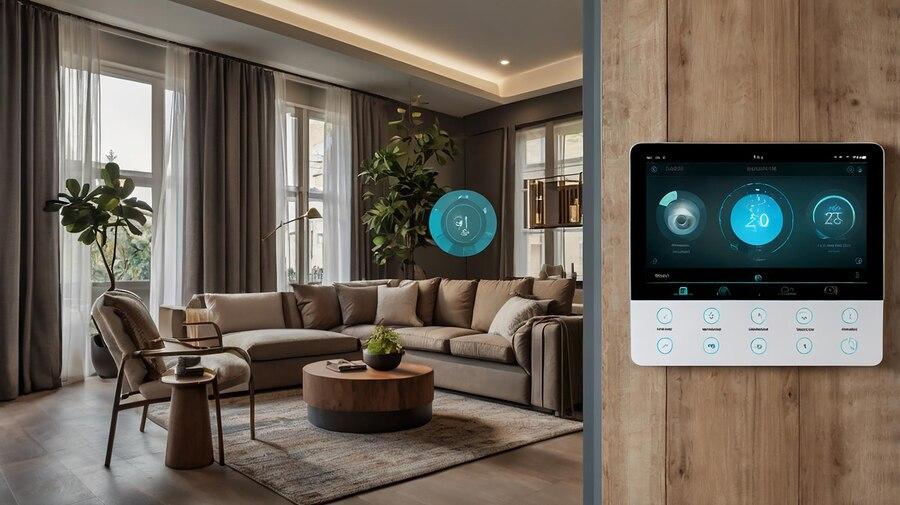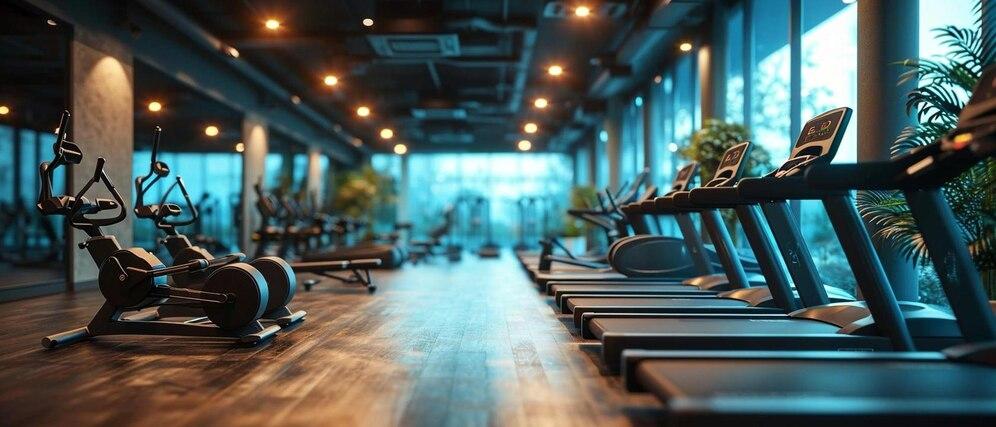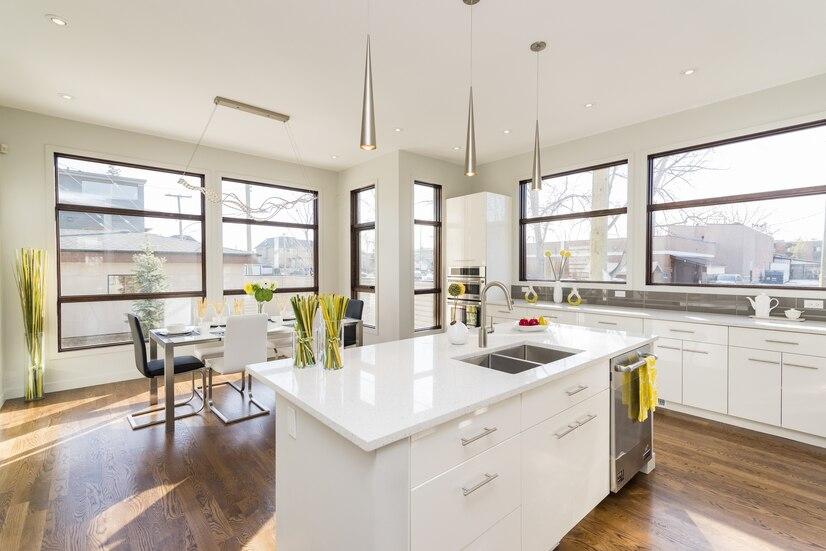



Table of Contents
- Introduction
- Smart Home Technology
- Energy Efficiency
- Sustainable Building Practices
- Health and Wellness Facilities
- Community Spaces
- High-Speed Internet and Connectivity
- Modern Kitchen and Bathroom Upgrades
- Flexible Living Spaces
- Conclusion
- Faq's
Introduction
In 2025, the real estate market continues to evolve, meeting the growing demands of modern living where comfort, technology, and sustainability remain at the forefront. As buyers and investors prioritize properties that offer luxury, convenience, and align with cutting-edge environmental and technological advancements, new real estate projects are stepping up to incorporate a range of must-have amenities to attract and satisfy their clientele. This year's must-have amenities represent an even more sophisticated blend of smart home innovations, enhanced energy efficiency, and community-focused designs tailored to contemporary lifestyles. From advanced smart home technology and eco-friendly solutions to wellness-oriented facilities and sustainable construction practices, these features have become indispensable in new developments. In this overview, we explore the key amenities that are setting the standard for real estate projects in 2025, showcasing how they enhance living experiences, reduce environmental impact, and provide greater value for property buyers and investors.
Smart Home Technology
Home Automation Systems
Integration of Smart Devices: Modern homes are equipped with interconnected smart devices that allow for seamless control of various systems within the home. This includes smart lighting, heating, cooling, and security systems that can be managed through a central platform or mobile app.
Control of Lighting, Heating, Cooling, and Security Systems: Home automation systems enable residents to adjust lighting, temperature, and security settings remotely or through programmed schedules. This not only enhances convenience but also optimizes energy usage and security.
Voice Assistants
Compatibility with Amazon Alexa, Google Assistant, etc.: Smart homes often integrate with popular voice assistants, allowing residents to control various aspects of their home using voice commands. This can include adjusting thermostats, turning lights on or off, and managing other smart devices.
Smart Security Systems
Video Doorbells: Equipped with cameras, video doorbells allow homeowners to see and interact with visitors at their door from anywhere using a smartphone or tablet.
Smart Locks: These provide keyless entry options, allowing homeowners to lock or unlock doors remotely, grant temporary access to guests, and enhance overall security.
Remote Surveillance: Advanced security systems offer live video feeds and alerts, helping homeowners monitor their property in real time from anywhere. Smart Home Technology
Smart Home Technology
Energy Efficiency
Solar Panels
Reduction of Energy Costs: Solar panels convert sunlight into electricity, reducing reliance on traditional energy sources and lowering monthly utility bills.
Environmental Benefits: By harnessing renewable energy, solar panels help decrease the carbon footprint and contribute to a cleaner environment.
Energy-Efficient Appliances
High Energy Ratings: Appliances with high energy efficiency ratings use less power while delivering the same performance, leading to reduced energy consumption and lower utility costs.
Lower Utility Bills: Energy-efficient appliances contribute to significant savings over time by reducing energy usage.
High-Performance Windows
Advanced Glazing: High-performance windows often feature multiple layers of glass and special coatings to enhance insulation and reduce heat loss or gain.
Improved Insulation: These windows help maintain a consistent indoor temperature, contributing to overall energy efficiency and comfort. Energy Efficiency
Energy Efficiency
Sustainable Building Practices
Green Building Certifications
LEED (Leadership in Energy and Environmental Design): LEED certification is awarded to buildings that meet high standards of environmental performance, including energy efficiency, water conservation, and sustainable materials.
BREEAM (Building Research Establishment Environmental Assessment Method): BREEAM certification recognizes buildings that achieve rigorous sustainability criteria, including energy use, health and well-being, and resource efficiency.
Water Conservation Features
Low-Flow Fixtures: Low-flow faucets, showerheads, and toilets reduce water consumption without compromising performance, contributing to water conservation efforts.
Water-Efficient Landscaping: Landscaping designed to use minimal water, such as drought-resistant plants and efficient irrigation systems, helps conserve water resources.
Recycling and Waste Management
Facilities for Sorting and Recycling Waste: Modern developments often include designated areas for recycling and waste sorting, making it easier for residents to manage and minimize waste.
Health and Wellness Facilities
Fitness Centers
Modern Equipment: On-site fitness centers are equipped with the latest exercise machines and equipment, promoting an active lifestyle.
Fitness Classes: Many developments offer group fitness classes or personal training options, catering to various fitness levels and interests.
Yoga and Meditation Spaces
Areas for Relaxation and Mindfulness: Dedicated spaces for yoga and meditation provide residents with opportunities for relaxation and mental well-being, enhancing overall quality of life.
Healthy Building Design
Improved Air Quality: Advanced ventilation systems and air purification measures ensure that indoor air quality is maintained, promoting respiratory health.
Natural Lighting: Maximizing natural light through strategic window placement and design helps boost mood and productivity while reducing the need for artificial lighting. Health and Facilities
Health and Facilities
Community Spaces
Co-Working Spaces
Areas for Remote Work and Collaboration: Co-working spaces within residential projects cater to remote workers and entrepreneurs, offering a productive environment with necessary amenities.
Community Hubs
Common Areas for Socializing and Events: Community hubs serve as gathering places for residents to socialize, host events, and build a sense of community.
Outdoor Recreation Areas
Parks: Green spaces for relaxation, picnics, and recreational activities.
Playgrounds: Safe and engaging areas for children to play.
Walking Trails: Paths for exercise and leisure, promoting an active lifestyle.
High-Speed Internet and Connectivity
Fiber Optic Broadband
High-Speed Internet Access: Fiber optic connections provide ultra-fast internet speeds, supporting high-bandwidth activities like streaming, gaming, and remote work.
Smart Building Infrastructure
Reliable Connectivity for Smart Devices: Ensuring robust and reliable internet connectivity throughout the property supports the seamless operation of smart home technologies. High Speed Internet
High Speed Internet
Modern Kitchen and Bathroom Upgrades
High-Quality Finishes
Countertops: Stylish and durable countertops made from materials like granite, quartz, or marble.
Cabinetry: Elegant and functional cabinetry with modern designs and finishes.
Fixtures: Contemporary faucets, handles, and hardware that enhance the aesthetic appeal and functionality of kitchens and bathrooms.
Energy-Efficient Appliances
Eco-Friendly Options: Appliances that use less energy and water while delivering high performance, contributing to overall sustainability.
Smart Mirrors
Built-In Displays for Information: Mirrors with integrated displays provide useful information such as weather updates, news, and personal health metrics.
Flexible Living Spaces
Modular Design
Adaptable for Different Uses: Modular design allows spaces to be reconfigured or adapted to meet changing needs, such as converting a bedroom into an office.
Multi-Functional Rooms
Guest Rooms: Rooms designed to serve as both guest accommodations and additional living spaces.
Home Offices: Dedicated areas that can be used as functional home offices, providing a productive work environment within the home.
Conclusion
In 2025, the real estate sector will continue to witness a significant shift towards integrating advanced amenities that cater to modern lifestyles, emphasizing technology, sustainability, and well-being. The inclusion of smart home technologies, such as automation systems and smart security, reflects a growing demand for convenience and connectivity. Energy-efficient features like solar panels and high-performance windows underscore a commitment to reducing environmental impact and utility costs.
Sustainable building practices are becoming standard, with certifications like LEED and BREEAM setting benchmarks for environmental responsibility. Health and wellness facilities, including fitness centers and yoga spaces, highlight the importance of holistic living. Community spaces, high-speed internet, and modern security measures enhance the quality of life and foster a sense of connection among residents.
Moreover, updates in kitchens and bathrooms, sustainable landscaping, and flexible living spaces offer both aesthetic appeal and practical functionality, ensuring that properties meet diverse needs and preferences.
Overall, these must-have amenities not only elevate the appeal of new real estate projects but also align with the evolving expectations of buyers and investors. By embracing these features, developers can create spaces that are not only desirable but also contribute to a more sustainable and connected future.
explore further
Latest from Home Buying Tips
More from Recommendations
Resources
Dwello, for every home buyer, is a way to go from 'I feel' to 'I know', at no extra cost.




